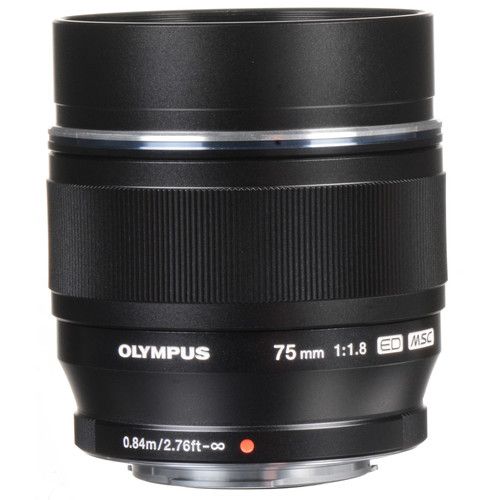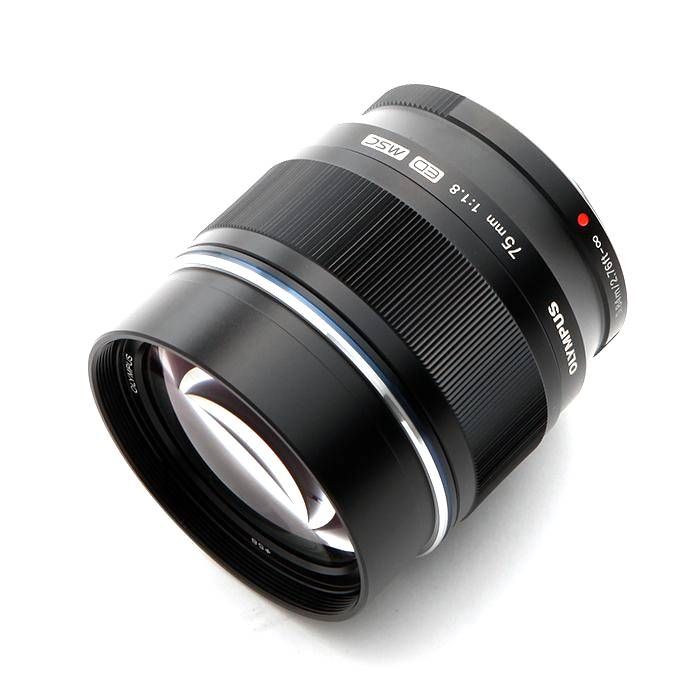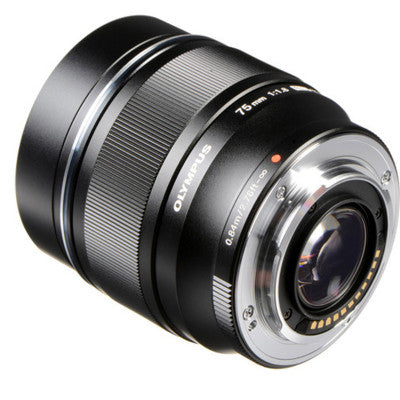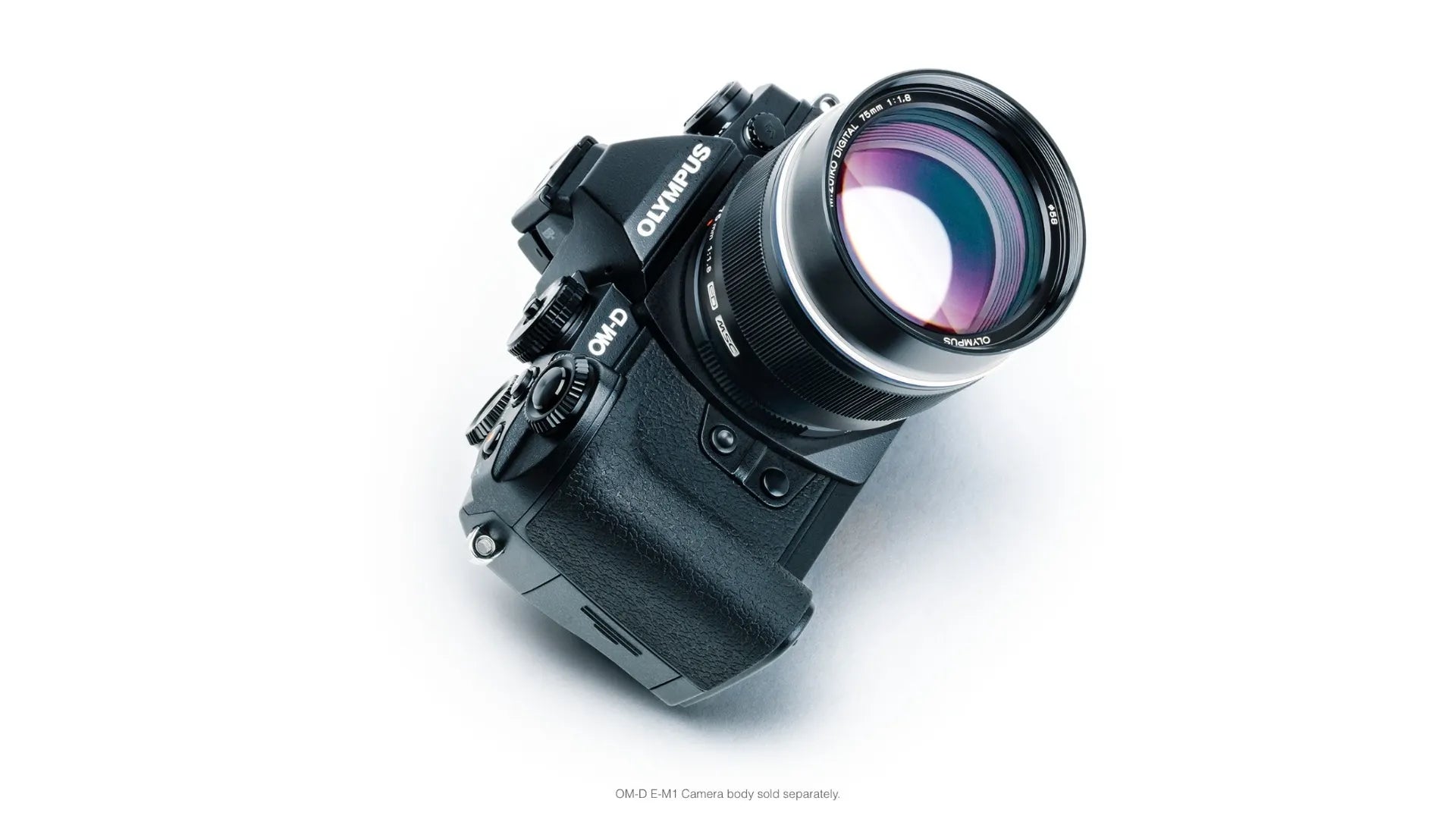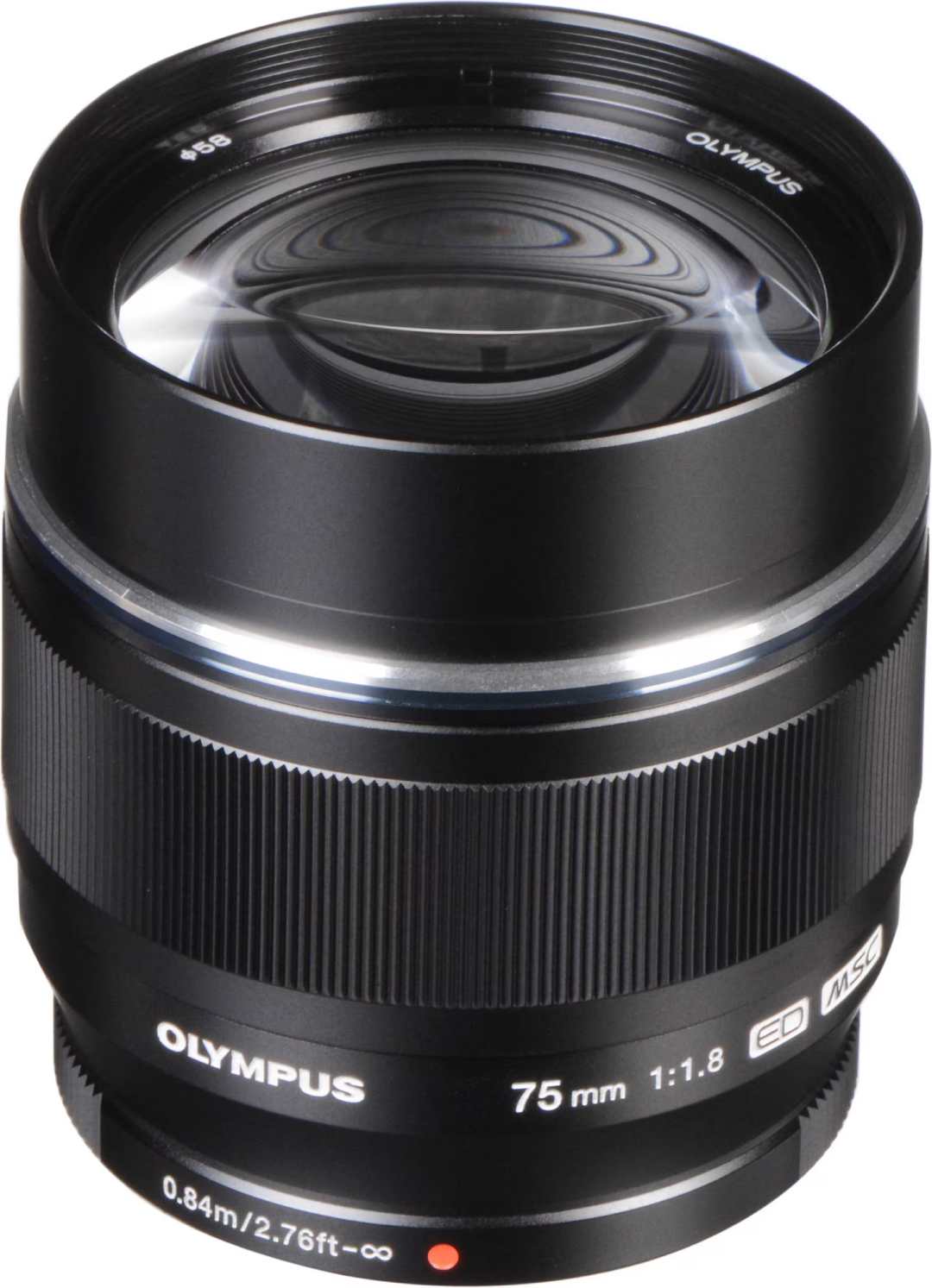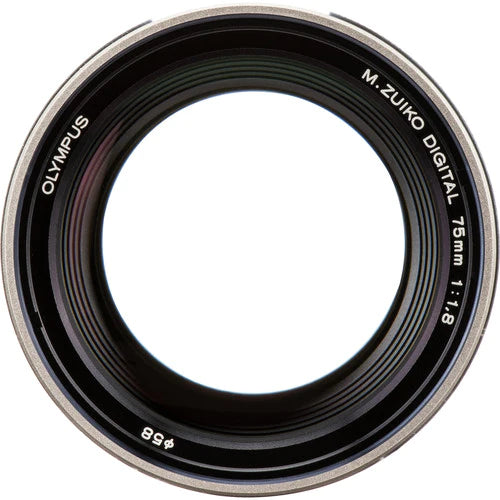Product Description
Olympus 75mm f1.8 M.ZUIKO PW EZ Black Micro Four Thirds Lens
- Ultra-bright 1:1.8 aperture
- Robust full-metal housing with a sophisticated, lightweight design.
- ZERO (Zuiko Extra-low Reflection Optical) coating for reduced reflection
- MSC compatible: High-speed and silent
- Perfectly corrected chromatic and spherical aberration
The 75mm f1.8 is a high-grade, fast aperture portrait lens featuring metallic construction and a light weight of just 10.7 oz. With a 35mm equivalent focal length of 150mm, it is ideally suited for studio portraits, theatre stage, and indoor sports photography. A large, bright 50mm front lens element compliments a sophisticated optical design of 10 individual lens elements in 9 groups, including a total of 3 ED lenses and 2 HR lenses. Its large f1.8 maximum aperture captures clear, sharp images when the lights are low, while its MSC (Movie and Still Compatible) AF drive assures fast and nearly silent focusing.

Engineered For Exquisite Quality
With ten individual lens elements in nine groups, metallic construction and a light weight of just 10.7 oz, this lens is a really advanced piece of engineering. Among these elements, you’ll find three ED, or extra-low dispersion, lenses that correct for chromatic aberration, and two HR, or high refractivity, lenses, which correct for spherical aberration. All lens elements feature Olympus’s ZERO coating technology for virtual elimination of ghosts and flares.

Built For Beautiful Bokeh
Photographers who shoot a lot of portraits and still-lives are always seeking excellent bokeh. Thanks to its large f1.8 aperture and 9 blade circular aperture, the 75mm f1.8 is especially well suited to capture the combination of a tack-sharp subject and beautifully soft, defocused background that exemplifies bokeh.
The Zuiko Extra-low Reflection Optical coating is twice as effective as conventional coatings, giving you the confidence to shoot in bright light without fear of ghosting and flaring.

Quiet Autofocus
The inclusion of the Movie & Still Compatible (MSC) mechanism provides amazingly fast – and nearly silent – autofocus operation. You’ll really notice the benefit when you play back your HD video and the only thing you hear is the ambient background noise in the scene you were filming; what you won’t hear is the sound of the lens moving as it changes focus. With MSC and the super-bright f1.8 aperture, you can film a school play or indoor sporting event in low light and still get excellent results.
Payment & Security
Your payment information is processed securely. We do not store credit card details nor have access to your credit card information.

